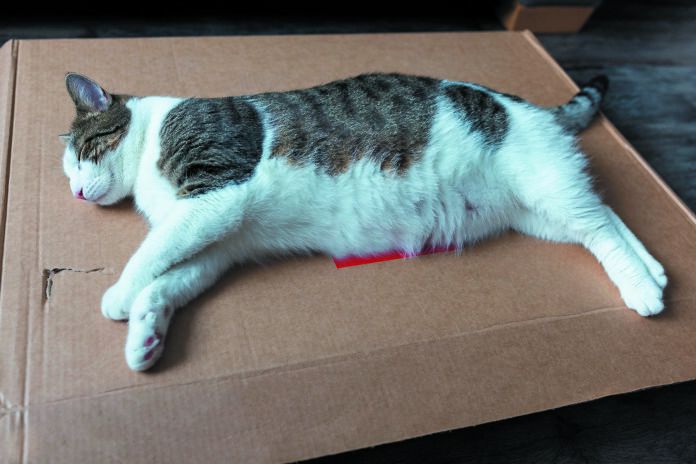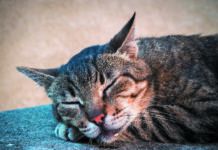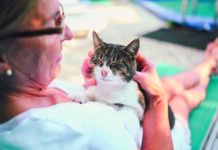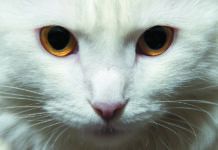Stubborn belly fat
Q: My cat was overweight, and I managed to trim her down with more careful feeding and cutting back on treats. I even started playing with her more both so she would burn off some more calories with exercise and also to help take her mind off food. She looks great and has more energy, but she still has a bulge of fat on the very lower part of her belly, near her back legs. My vet says her weight is ideal now and not to limit her calories any further — but then why does she still have that pudgy spot? She’s otherwise so sleek and beautiful.
Anne Ethelson
Pasadena, California
Dear Ms. Ethelson,
A: That bulge of pudginess is a normal, healthy part of feline anatomy. It has been there all along and is just more noticeable now that your pet has shed layers of excess fat around it. The bulge is also on big cats in the wild. Called the primordial pouch, it is believed to serve two distinct purposes.
The first is protective. When cats fight, either playfully or for real, they often use a move called the bunny kick, jabbing their opponent’s abdominal region with their hind legs. The extra layer of padding protects a cat’s delicate abdominal organs.
The second reason for the pouch is that it enhances flexibility. It might sound counterintuitive that an extra roll of fat could make a cat more limber, but the looseness of the skin in the primordial pouch allows a cat to extend her limbs further when she goes into full stride. It gives felines an edge when running from a predator.
Age-related dementia
Q: I know that cats are living longer than they used to. Does that mean they are more apt to become senile as they get up there in years?
Peggy Quincy
Denver, Colorado
Dear Ms. Quincy,
A: In a word, yes. Cats, like people, become more prone to developing age-related dementia the older they get. It’s called feline cognitive decline or cognitive dysfunction syndrome and follows a course much like Alzheimer’s disease. One study has shown that as many as four out of five cats age 16 and older show signs of the condition. They even appear in some cats as young as 10, although 12 is the age at which they begin to appear with some frequency.
Those signs include seeming disoriented and perhaps wandering aimlessly around the house. A cat whose cognition is declining may also sleep most of the day and no longer want to interact with people — or other cats living in the home. And she may stay up at night, sometimes making moaning sounds and perhaps vocalizing more frequently in general. And she might start missing the litter box after a lifetime of using it appropriately. (Of course, you should always rule out a medical issue.)
Signs tend to come on subtly, gradually. Once the veterinarian rules out medical disorders, she might prescribe a drug called Anipryl, which can potentially help keep symptoms from accelerating as quickly as they might have. She might also prescribe anti-anxiety medicine. Fear and unease often accompany cognitive decline.
Other steps to take: Keep your cat’s routine the same, stimulate her mind by playing with her more frequently, and put out more litter boxes if she’s soiling the house.




